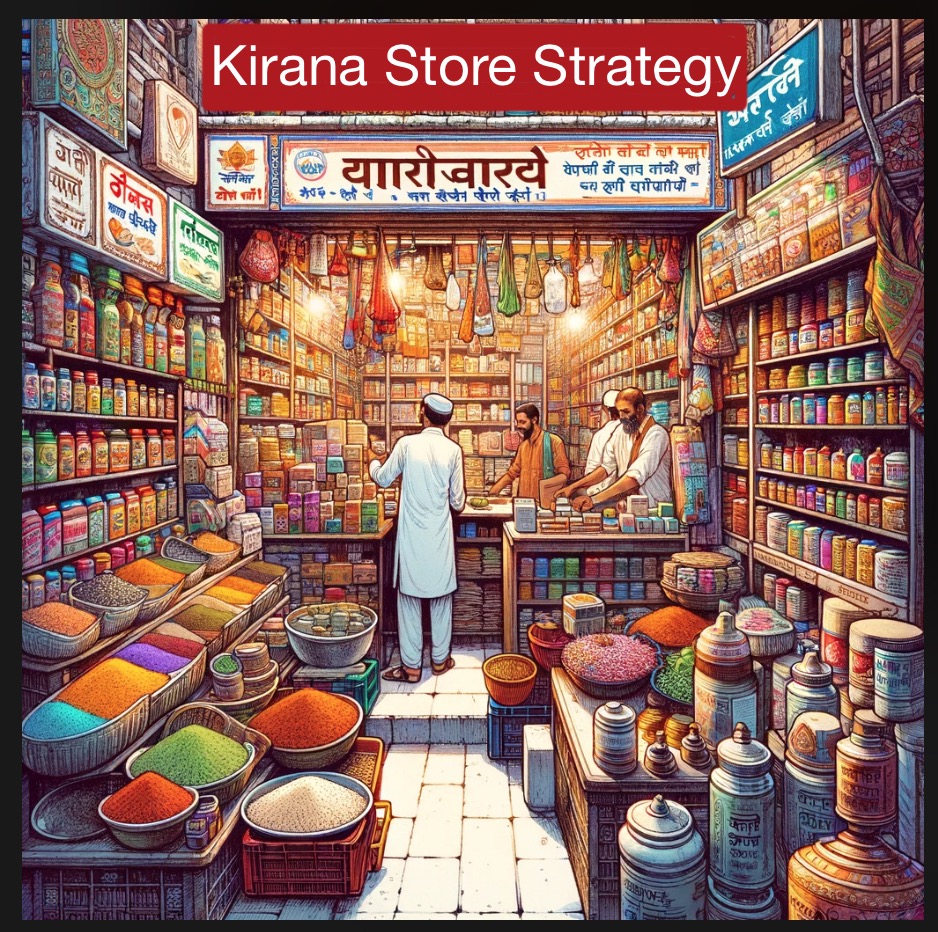


“Kirana Store strategy” or “Grocery Store Strategy,” is a highly tactical, short-term approach to retail operations, particularly in the grocery segment. This strategy emphasizes breadth over depth in product offerings, prioritizes immediate sales over long-term brand or category development, and leverages pricing flexibility to drive transactions. This strategy is not limited to retail, but seen used widely by many businesses especially services sector. While innovative, it presents several challenges and opportunities within a retail context. Here’s a more detailed analysis:
Core Characteristics:
Advantages:
Challenges:
While the “Grocery Store Strategy” is unique, several existing retail and business strategies share some characteristics or offer alternative approaches:
In conclusion, while the “Grocery Store Strategy” offers an innovative approach to retailing, it’s important for businesses to consider the long-term implications of such a strategy on brand equity, customer loyalty, and sustainable growth. Alternatives or complementary strategies may provide a more balanced approach to achieving both short-term sales targets and long-term business objectives.
Strategy boffins team has come up with Kirana store or Grocery store strategy